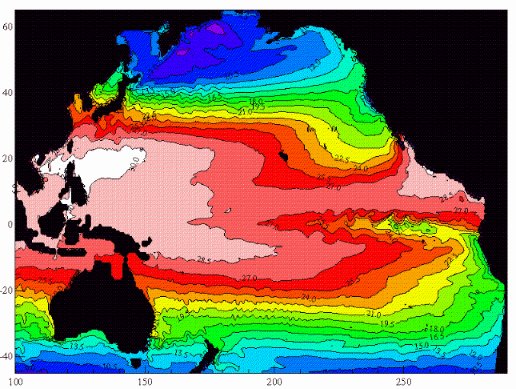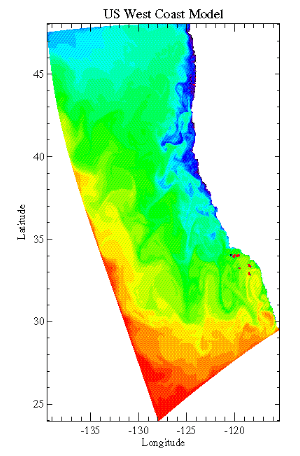
| |||||
|
|
|
|
|
|
|
|
|
|
|
|
|
|
|
|
Yi Chao
The coastal ocean off western North America has received considerable oceanographic study
because of its fisheries and proximity to large human populations. The region is strongly influenced
by the process of coastal upwelling, which occurs along eastern ocean margins when equatorward
winds force surface water offshore, drawing deeper water to the surface. The
characteristic signature of upwelling is a cool band along the coast, typically tens of kilometers
wide, separating from warmer offshore waters by a series of fronts, plumes, and eddies that can
extend more than 100 km offshore. In addition
to these local features, the eastern Pacific
upwelling system is also influenced remotely by the
basin-scale circulation and variability, e.g.,
El Niño/La Niña and Pacific Decadal Oscillation (PDO).
The long-term objective of my research is to (1) develop a high-resolution physical model for
the U.S. West Coast ocean; (2) nest this high-resolution regional model in a Pacific basin-wide
model; (3) develop and refine data assimilation techniques; and (4) validate the model results with
in situ and satellite observations. Both the basin-scale Pacific model (see Figure 1) and the
high-resolution regional model (see Figure 2) will allow us to address the following scientific
questions: What are the physical links between the El Niño/La Niña
or PDO with the California
upwelling system, and what are their characteristic time and space scales? What alternate physical
processes affect the California upwelling system at these characteristic scales? What are the
relative roles of local mesoscale eddies versus remote basin-scale variability in forcing the California
upwelling system?
http://comp.jpl.nasa.gov/~yc/COMP/monterey.html
|
| PRIVACY | | IMAGE POLICY |
Webmaster: Xiaosu Xie
|



